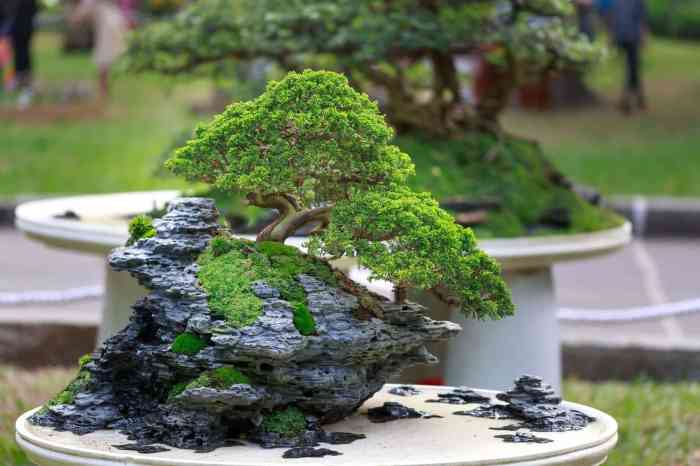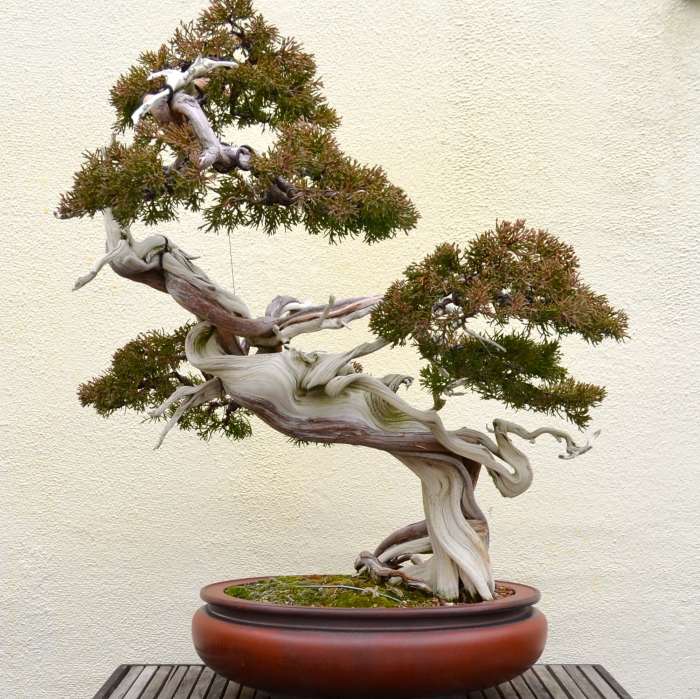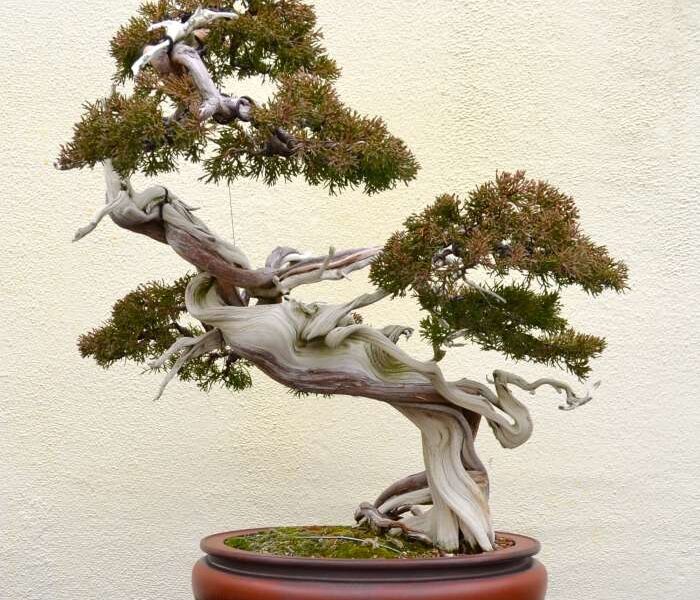Bonsai Tree Decoration Ideas: Enhance Your Space
Bonsai tree decoration ideas offer a unique and captivating way to bring nature’s beauty indoors. These miniature trees, meticulously shaped and styled, serve as living works of art that can transform any space into a serene oasis.
From selecting the perfect pot and accessories to understanding the art of placement and care, bonsai tree decoration is a fascinating journey that blends aesthetics with horticultural expertise. Whether you’re seeking a minimalist touch for your modern living room or a traditional Japanese garden vibe, bonsai trees can elevate your home decor and create a sense of tranquility and wonder.
Bonsai Tree Styles and Shapes: Bonsai Tree Decoration Ideas

Bonsai, the art of growing miniature trees in pots, is a fascinating and rewarding hobby. One of the most captivating aspects of bonsai is the variety of styles and shapes that can be achieved. These styles, developed over centuries, are a reflection of nature’s beauty and the artist’s creativity.
Upright Styles
Upright styles are the most common and basic bonsai styles. They are characterized by a strong, vertical trunk and a symmetrical canopy. There are two main types of upright styles:
- Formal Upright (Chokkan):The formal upright style is the most symmetrical and classic bonsai style. The trunk is straight and vertical, with branches growing evenly on both sides. The apex (top of the tree) is usually the highest point, and the branches taper gradually in size as they descend the trunk.
A classic example of a formal upright style is a Japanese black pine (Pinus thunbergii) with a straight trunk and symmetrical branches, creating a balanced and elegant appearance.
- Informal Upright (Moyogi):The informal upright style is more natural and less symmetrical than the formal upright. The trunk is slightly curved, and the branches can grow in a more irregular pattern.
A Japanese maple (Acer palmatum) with a slightly curved trunk and branches that spread out naturally would be a good example of an informal upright style.
Slanting Styles, Bonsai tree decoration ideas
Slanting styles are characterized by a trunk that leans at an angle. They give the impression of a tree that has been weathered by wind or other natural forces.
- Slanting (Shakan):The slanting style features a trunk that leans at a distinct angle, with the apex pointing in the same direction as the lean. The branches on the lower side of the trunk are usually larger and more numerous than those on the upper side.
An example of a slanting style bonsai could be a Chinese juniper (Juniperus chinensis) with a trunk that leans to the right, with the apex also pointing to the right.
Cascade Styles
Cascade styles are dramatic and dynamic styles that evoke the image of a tree growing on a cliff or mountainside.
- Cascade (Kengai):The cascade style features a trunk that cascades over the edge of the pot, with the apex extending below the pot’s rim. The branches on the lower side of the trunk are usually longer and more numerous than those on the upper side.
A Japanese black pine (Pinus thunbergii) with a trunk that cascades over the edge of the pot, with the apex extending below the rim, is a good example of a cascade style bonsai.
Last Point

As you delve into the world of bonsai tree decoration, remember that the key lies in embracing creativity and personal expression. Let your imagination guide you as you explore different styles, themes, and accessories, transforming these miniature trees into captivating focal points that tell a story of nature’s artistry and your own unique aesthetic.
Commonly Asked Questions
What are the best bonsai tree styles for beginners?
Upright and informal upright styles are great for beginners as they are relatively easy to maintain and shape.
How often should I water my bonsai tree?
Bonsai trees require regular watering, typically every 1-2 days, depending on the climate and pot size. It’s essential to check the soil moisture before watering.
Can I use any type of soil for bonsai trees?
Bonsai trees need well-draining soil with good aeration. Specialized bonsai soil mixes are available, or you can create your own using a blend of potting soil, sand, and perlite.
What are some creative ways to display bonsai trees?
You can display bonsai trees on shelves, tables, or even create a miniature forest by grouping multiple trees together.

